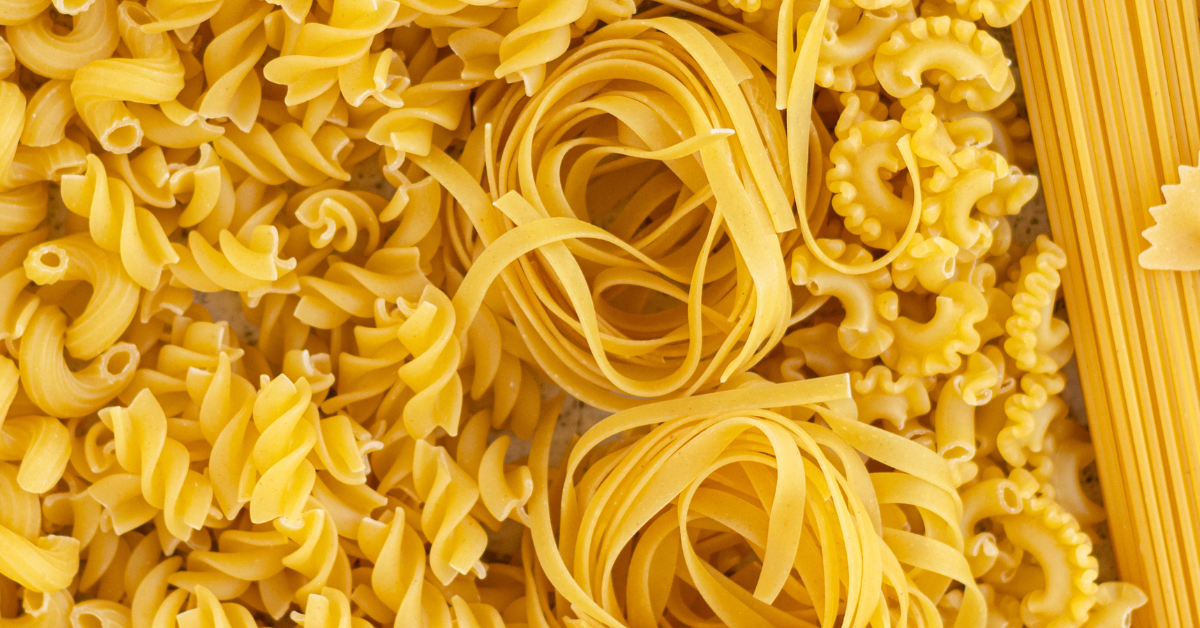Pasta has very ancient and debated origins, attributed to the ancient Romans and Greeks but also to the Arabs and later spread to Sicily reaching Naples, and Asia.
Diverse cultures that have led pasta, today, to be the most representative symbol of the Mediterranean diet, and in 2010 it was recognized as an “Intangible Cultural Heritage of Humanity” by UNESCO.
.jpg?width=800&height=533&name=Giornata_internazionale_pasta_cultura_fake_news_UniSR%20(8).jpg)
A few simple ingredients
The durum wheat grain is ground to extract the semolina, which is then mixed with water and then dried to ensure preservation. The art of pasta making has made it possible to make different shapes but also to perfect its organoleptic and nutritional qualities.
The durum wheat grain consists of several layers that are removed during hulling, which is the process that separates the bran from the endosperm, i.e. the core of the grain that contains the nutritional properties. From here different types of semolina flours are produced: milled, semi-wheat and whole wheat (with the presence of bran).
.jpg?width=800&height=532&name=Giornata_internazionale_pasta_cultura_fake_news_UniSR%20(7).jpg)
Pasta consists of about 85-88% carbohydrates, 12% protein and 1% lipids, can provide a good share of fiber, vitamins and minerals if eaten in the whole-wheat version. Basically, pasta provides energy to our body, and the complex carbohydrates it contains are a real fuel especially in the diet of those who practice sports.
A number of false beliefs associated with pasta consumption have been created over the years, stemming from an incorrect diet culture by spreading fake news that has no scientific basis: let's find out which ones.
.jpg?width=800&height=356&name=Giornata_internazionale_pasta_cultura_fake_news_UniSR%20(3).jpg)
Pasta does not make you fat
Among these, the most widespread is that pasta makes you fat.
Carbohydrates, the main element of pasta, are essential nutrients and represent the main source of energy. They are therefore essential to build a healthy diet. Depriving yourself of pasta does not favor physiological weight loss, but, if not replaced with other sources of carbohydrates, you only risk losing fluids and weakening lean mass.
.jpg?width=800&height=533&name=Giornata_internazionale_pasta_cultura_fake_news_UniSR%20(4).jpg)
Cooking pasta does not make it more digestible
The first part of the digestive process already happens in the mouth. This means that chewing releases enzymes such as ptyalin, which break down the starch into smaller molecules to reach the intestine, thus facilitating digestion and absorption of essential nutrients.
This is why cooking al dente is preferable: a part of the starch remains more resistant to heat and cannot be completely digested by the enzymes, resulting in a lower impact on glycemia and increasing the feeling of satiety in the long term.
.jpg?width=800&height=533&name=Giornata_internazionale_pasta_cultura_fake_news_UniSR%20(5).jpg)
Gluten-free pasta is not healthier than pasta with gluten
Pasta contains gluten, an important reserve protein contained in the endosperm of wheat that ensures elasticity to the dough.
Eating gluten-free pasta is only useful for people with celiac disease or non-celiac gluten sensitivity. Scientific evidence, in fact, confirms that it makes no sense to eliminate gluten from the diet to promote weight loss or improve digestion.
.jpg?width=800&height=530&name=Giornata_internazionale_pasta_cultura_fake_news_UniSR%20(6).jpg)
Pasta at dinner is not bad for you
For dinner, a good plate of pasta seasoned with seasonal vegetables and balanced with protein sources can be a good ally for a good rest.
There is in fact evidence of the positive effects on the quality of sleep thanks to the intake of tryptophan, an amino acid precursor of serotonin. This characteristic also makes pasta a food ally of good mood.
.jpg?width=800&height=532&name=Giornata_internazionale_pasta_cultura_fake_news_UniSR%20(2).jpg)
References
- Pasta Consumption Is Linked to Greater Nutrient Intakes and Improved Diet Quality in American Children and Adults, and Beneficial Weight-Related Outcomes Only in Adult Females. Front Nutr. 2020 Aug 7:7:112. doi: 10.3389/fnut.2020.00112
- Impact of Pasta Intake on Body Weight and Body Composition: A Technical. Review Nutrients. 2023 Jun 9;15(12):2689. doi: 10.3390/nu15122689.
- Effect of Gluten-Free Diet on Gut Microbiota Composition in Patients with Celiac Disease and Non-Celiac Gluten/Wheat Sensitivity. Nutrients. 2020 Jun 19;12(6):1832. doi: 10.3390/nu12061832


.jpg?width=800&height=533&name=Giornata_internazionale_pasta_cultura_fake_news_UniSR%20(8).jpg)
.jpg?width=800&height=532&name=Giornata_internazionale_pasta_cultura_fake_news_UniSR%20(7).jpg)
.jpg?width=800&height=356&name=Giornata_internazionale_pasta_cultura_fake_news_UniSR%20(3).jpg)
.jpg?width=800&height=533&name=Giornata_internazionale_pasta_cultura_fake_news_UniSR%20(4).jpg)
.jpg?width=800&height=533&name=Giornata_internazionale_pasta_cultura_fake_news_UniSR%20(5).jpg)
.jpg?width=800&height=530&name=Giornata_internazionale_pasta_cultura_fake_news_UniSR%20(6).jpg)
.jpg?width=800&height=532&name=Giornata_internazionale_pasta_cultura_fake_news_UniSR%20(2).jpg)